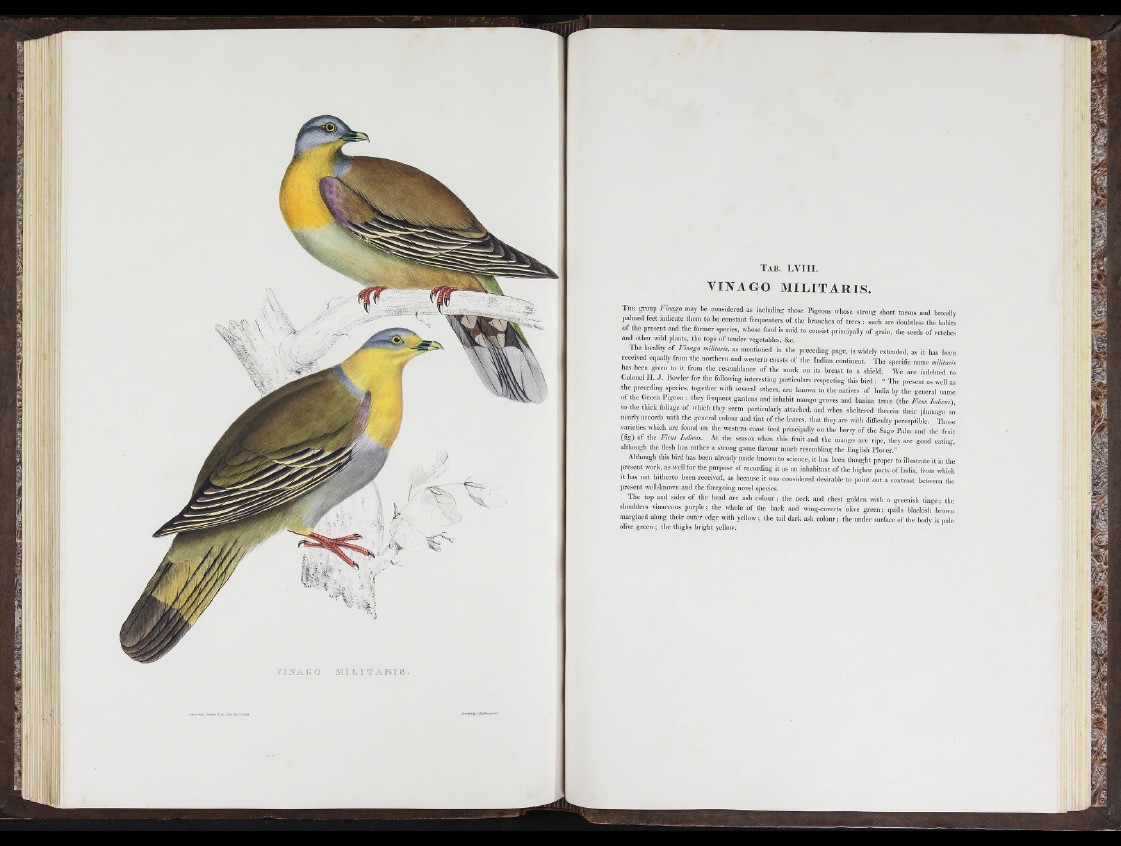
T I f t A G O J I I L I T A B I S
Tab LV III.
VINAGO MILITARIS .
T h e g,-o,.p Vinago m a , be considered as including those Pigeons whose strong short tarsus and broadly
palmed feet ind.cate them to be constant frequenters o f the branebes of trees : sneh are doubtless the habits
o f the present and the former species, whose food is said to consist principally of grain, the seeds of vetches
and other wild plants, the tops of tender vegetables, &c.
The locality of Vinago mUitara, as mentioned in the preceding page, is widely extended, as it has been
received equally from the norther,, and western coasts of the Indian continent. The specific name mUitark
has been given to ,t from the resemblance of the mark on its breast to a shield. Wc a.-c indebted to
Colonel H. J . Bowler for the following interesting partlcnlars respecting this bird ; ■■ The present as well as
the preced.ng spec.es, together with several otliei-s, arc known to the natives of India by tbe general name
of the Green P ig eo n : they frequent gardens and inhabit mango groves and banian trees (the Fious Indicas)
to the thick foliage o f which they seem partiealarly attached, and when sheltered therein their pluinacc s j
nearly accords with the general colonr and tint o f the leaves, that th e , arc with difificulty percc|,tiblc. Those
varieties which are found on the western coast feed principally on tho berry of the Sago Palm and the fruit
(fig) o f the F km Indiem. At the season when this fruit and the mango arc ripe, th e , are good eating,
although the flesh has ra the r a strong game flavour miicli resembling the English Plover.”
Although this bird has been already made known to science, it has been thought proper to lllnstrate it in the
present work, as well for the pui-pose of recording it as an Inl.abitnnt o f the higher parts of India, from which
it has not hitherto been received, as because it was considered desirable to point out a contrast hctweci. the
present well-knoivn and the foregoing novel species.
The top and sides of the head are ash colour ; the neck and chest golden with a greenish tinge; the
shoulders vinaceous p urple ; the whole o f the baek and wing-coverts olive g re en ; quills blackish hiowii
margined along their outer edge with yellow ; the tail dark ash colonr; the under surface o f the body is pale
olive green ; the thighs bright yellow.